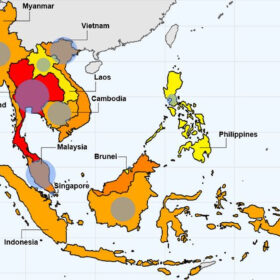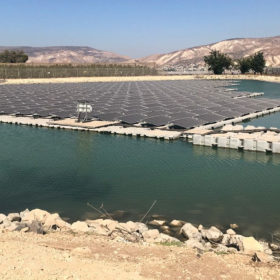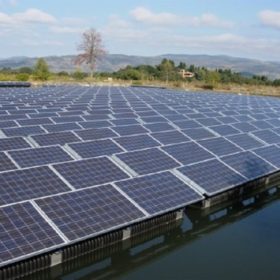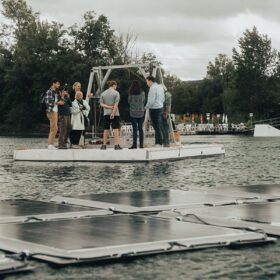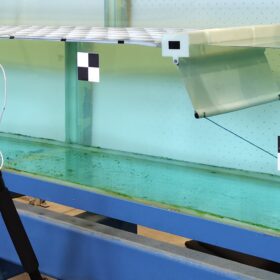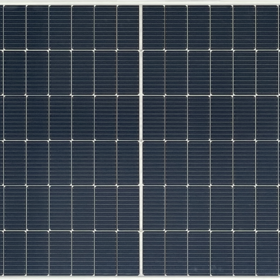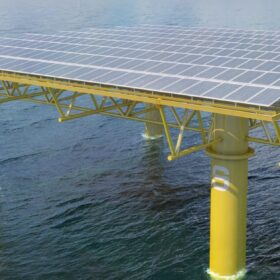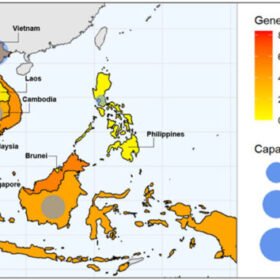Southeast Asia has technical potential to deploy over 1 TW of floating PV
A group of researchers from the US National Renewable Energy Laboratory assessed the potential for floating PV (FPV) plants at reservoirs and natural waterbodies in 10 Southeast Asian countries. It found that the overall FPV technical potential for the region ranges from 477 GW to 1,046 GW.
Indian hydropower company secures 90 MW of floating PV for $0.046/kWh
SJVN Green Energy has secured 90 MW of floating solar capacity in the Indian state of Madhya Pradesh with a bid of INR 3.79 ($0.046)/kWh.
Indian developer wins tender to deploy 80 MW of floating PV for $0.047/kWh
Hinduja Renewables has won an 80 MW tender for the second phase of a 600 MW floating solar project, with a tariff of INR 3.89 ($0.047)/kWh.
Floating PV for waterparks
Prefabricated floating solar PV provider Sunlit Sea, based in Norway, has provided its floaters for a 60 kW floating array installed at a waterpark in Germany.
New mooring system for offshore, coastal floating PV arrays
The novel mooring solution consists of perimeter pontoons, barriers, clump weights, mooring lines and anchors. Its creators claim it is cheaper in materials and maintenance, as well as more wave-stable, compared to mooring systems using elastic cables.
Offshore floating solar on calm seas could provide unlimited energy
In a new monthly column for pv magazine, the International Solar Energy Society (ISES) describes how regions that don’t experience waves larger than 6 m nor winds stronger than 15 m/s could generate up to one million TWh per year via offshore floating PV arrays. Most of the good sites are close to the equator, in and around Indonesia and tropical West Africa.
SDN unveils 600 W solar modules for floating PV
South Korea’s SDN has developed new bifacial solar modules based on M10 wafers. The new products feature a power conversion efficiency of 21.46% and, according to the manufacturer, are the world’s most efficient floating PV panels.
Offshore floating PV demonstrator to go online on Belgium’s North Sea coast
The SeaVolt consortium says it will launch an offshore floating PV demonstrator off the Belgian port of Ostend. The main companies – Tractebel, DEME, Equans and Jan De Nul – say the anchored floating array will collect data for at least a year to scale up the tech.
Indian state launches tender for 100 MW of floating solar
The Punjab Energy Development Agency (PEDA) is seeking developers to set up 100 MW of floating solar capacity across the Indian state of Punjab.
US researchers assess potential for floating solar in Southeast Asia
The US National Renewable Energy Laboratory (NREL) and its partners have assessed the technical potential for floating PV throughout Southeast Asia.
